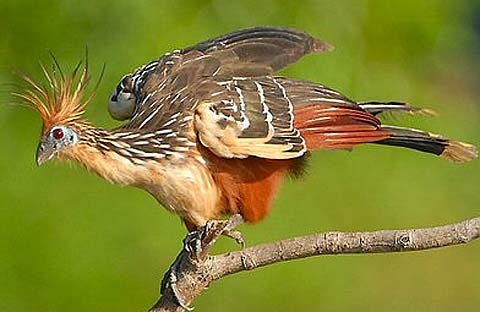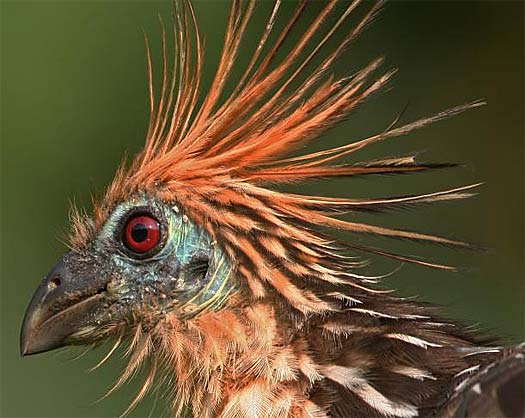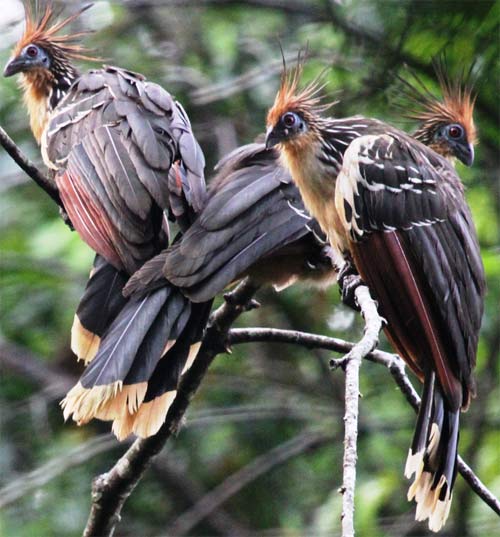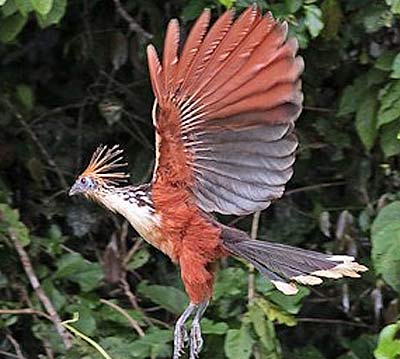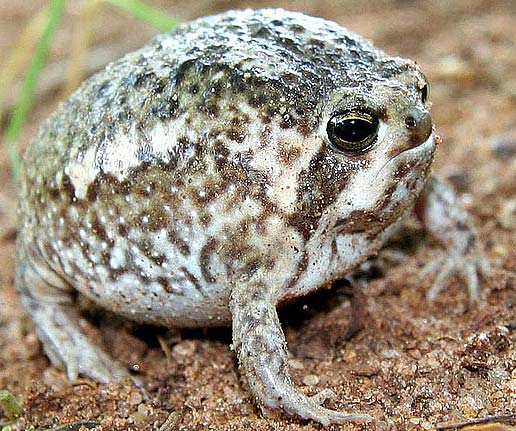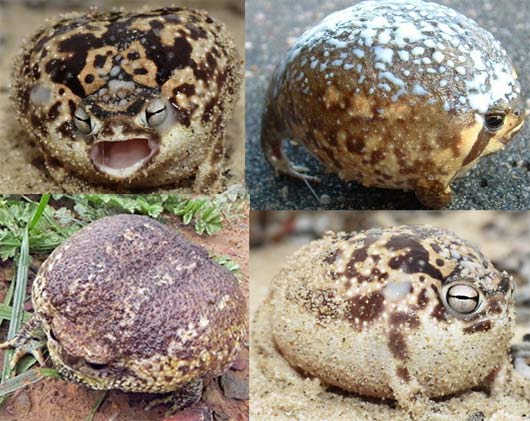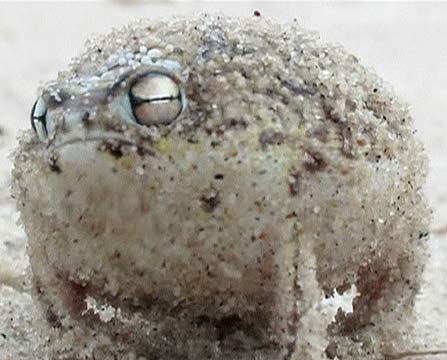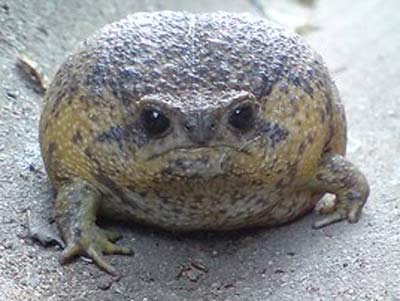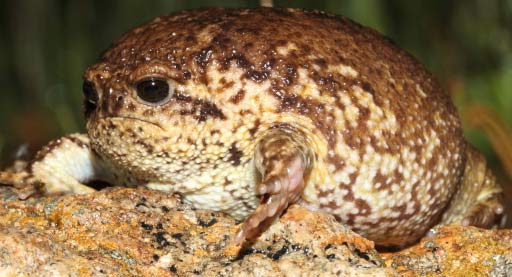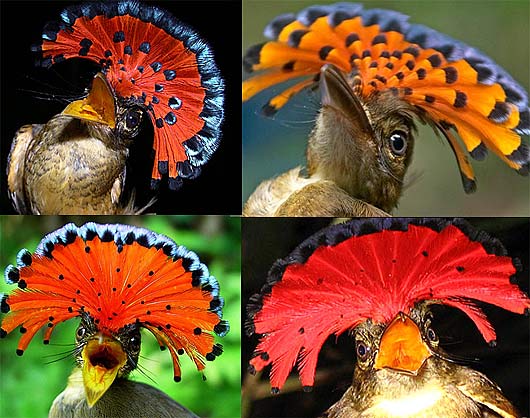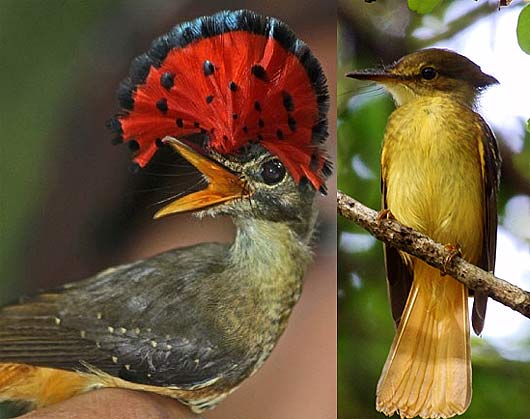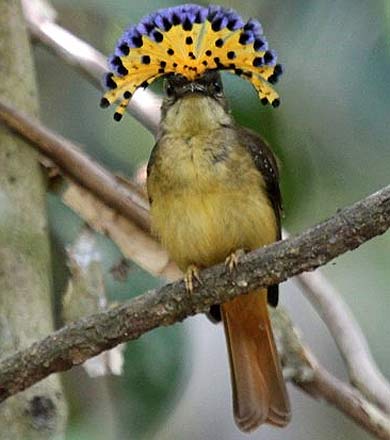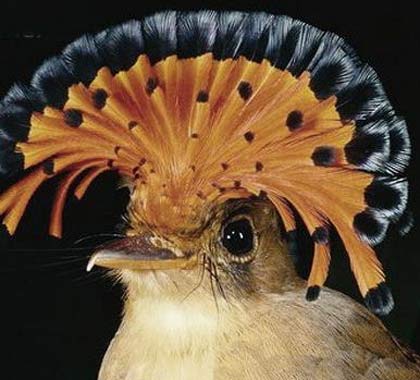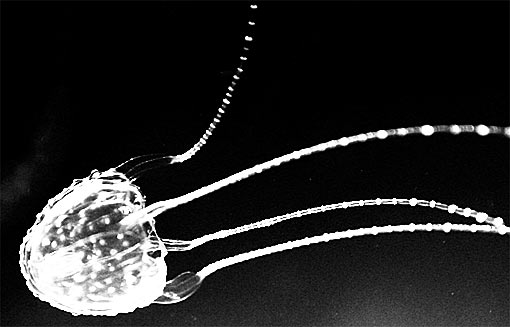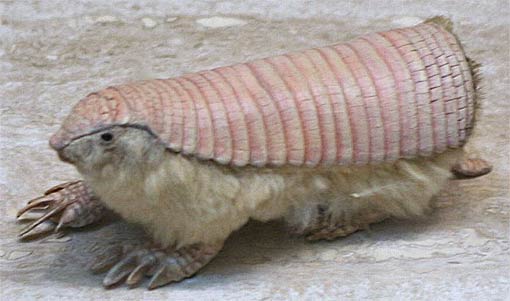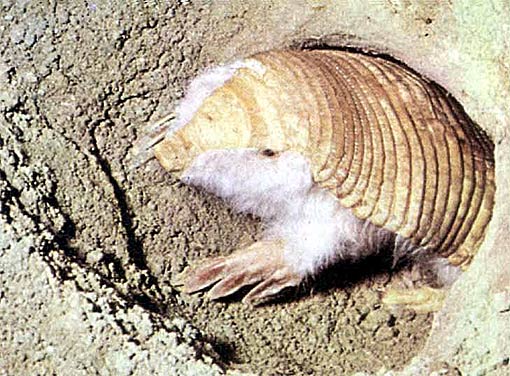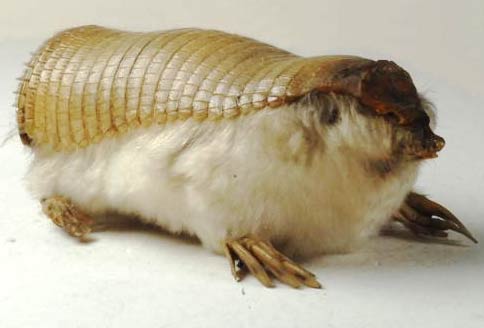Hoatzin - Funky Stinkbird with Nice Crest
The hoatzin, also known as the canje pheasant, and the stinkbird, is a species oftropical bird found in the swamps, river-side forests, and mangroves of the Amazon and Orinico delta in South America. The funny-looking, and oddly-named bird is known for its chicks having claws on two of their wing digits, and also for its large spiky crest. The crest resembles a mohawk, while the claws, which are lost as the bird matures, are a mechanism for the youngsters to escape danger through climbing. The young birds are also able to swim from a young age. This way they can drop from their nests over the river if some danger approaches and casually swim to safety (unless some other danger presents itself). The hoatzin's long wings are used more for balanceand support when climbing and perched in trees than for flying. When it does get down to flying, it is not very impressive. The birds hang out in flocks of 15 or so and are mostly busy searching for leaves and fruit in the morning and evening.
The hoatzin is the same size as a common pheasant, about 26 inches (65 centimeters) in length. It has a long neck and a tiny head, and gets it most-insulting of alternativenames (stinkbird) for the foul odor that it possesses. This odor is the result of its digestive system, which ferments vegetable matter. The hoatzin subsists mainly on leaves, fruits, and flowers, and is not preyed upon by many if any other creatures; this is perhaps because it's reputed to have a bad taste (possibly from its diet and digestive tract). For years, it's been debated what other birds the hoatzin is actually related to, asDNA testing and evolutionary studies have found no known relatives. A docile species, it is known to let humans walk right up to it with little concern for attack.
